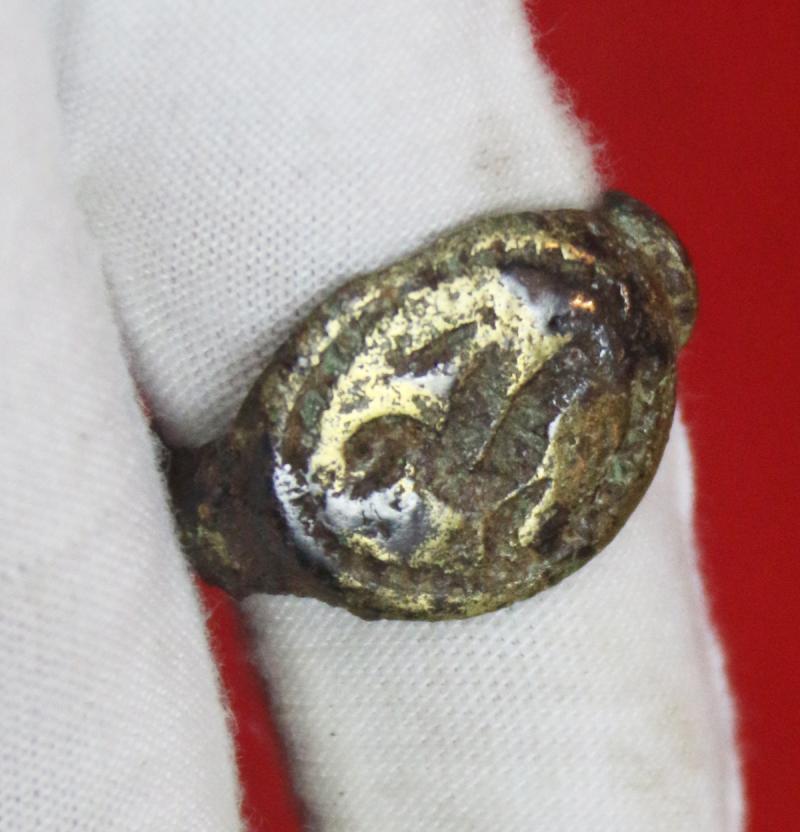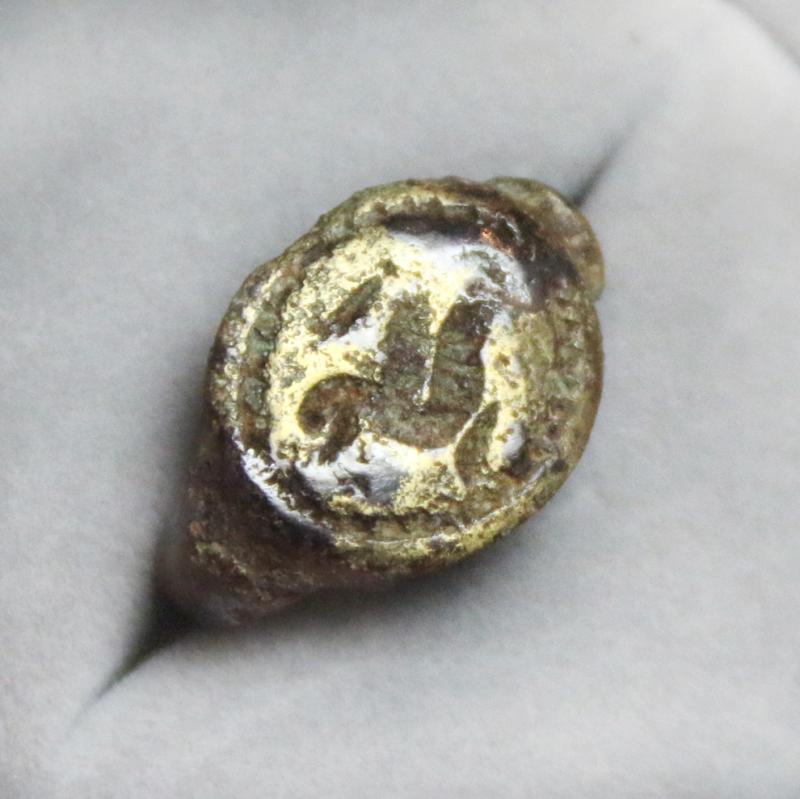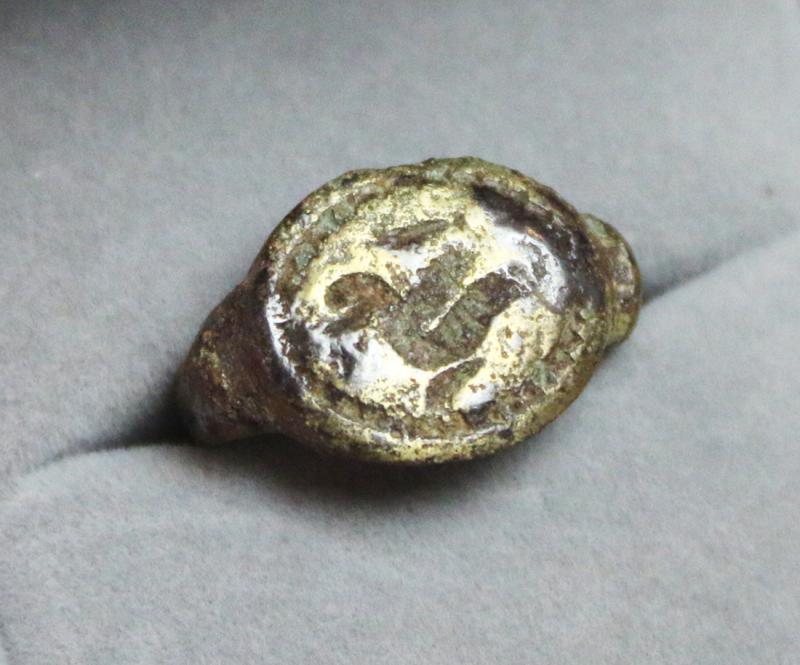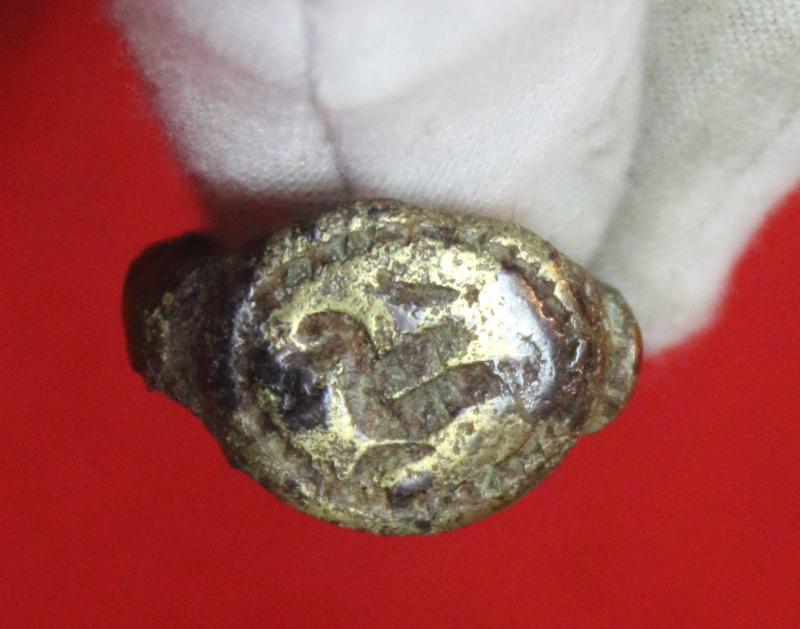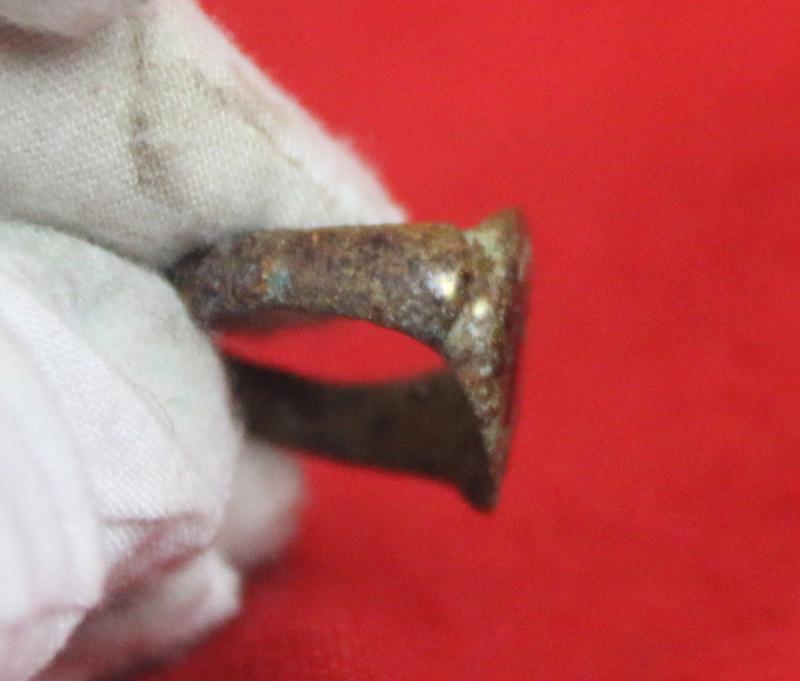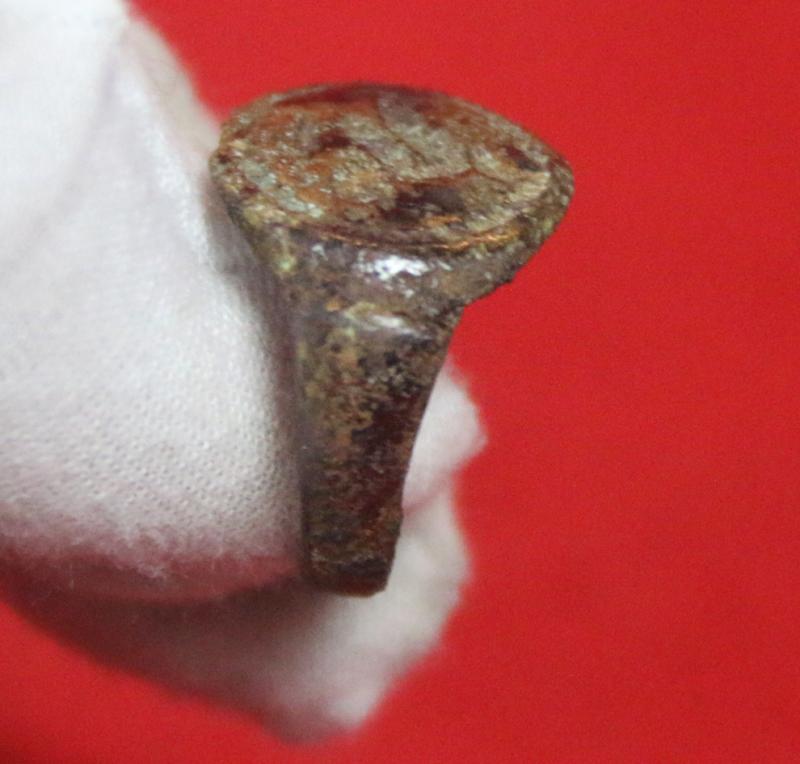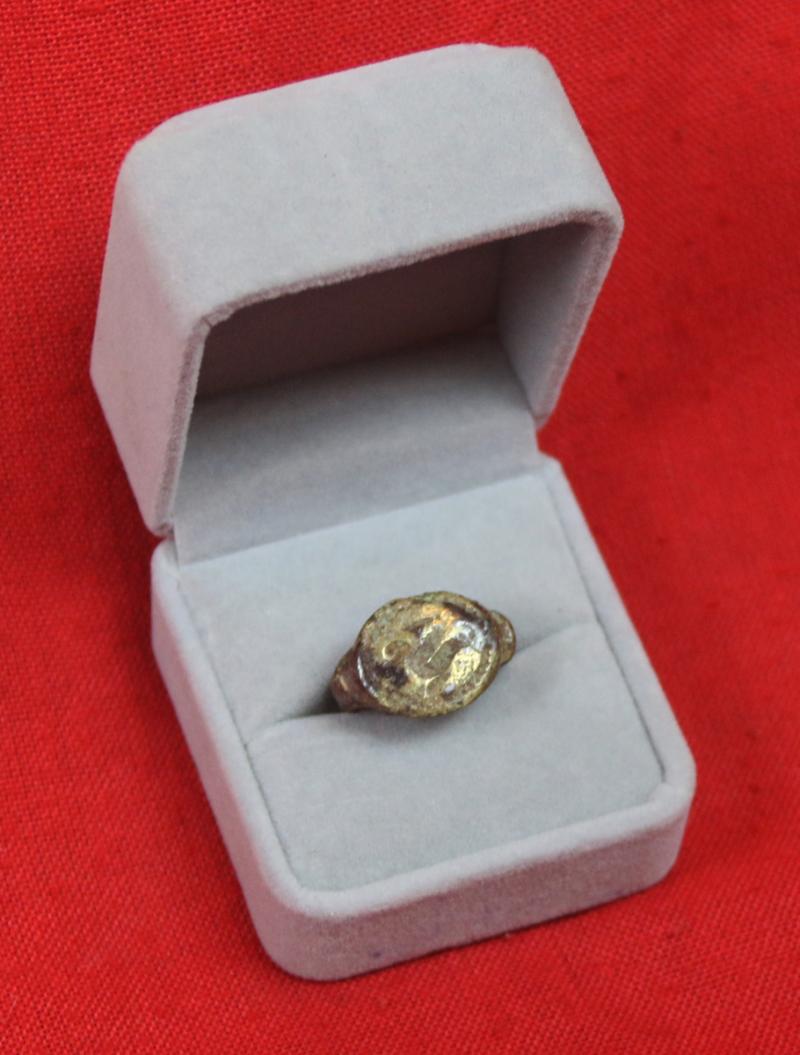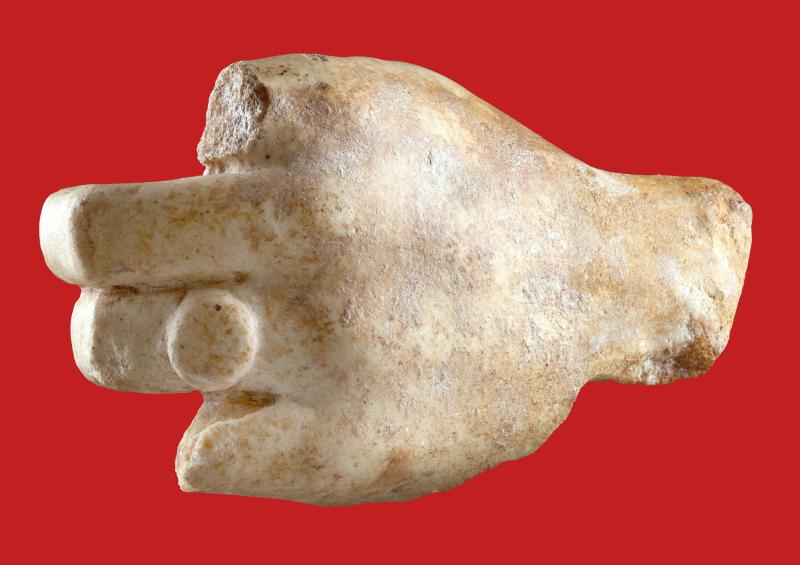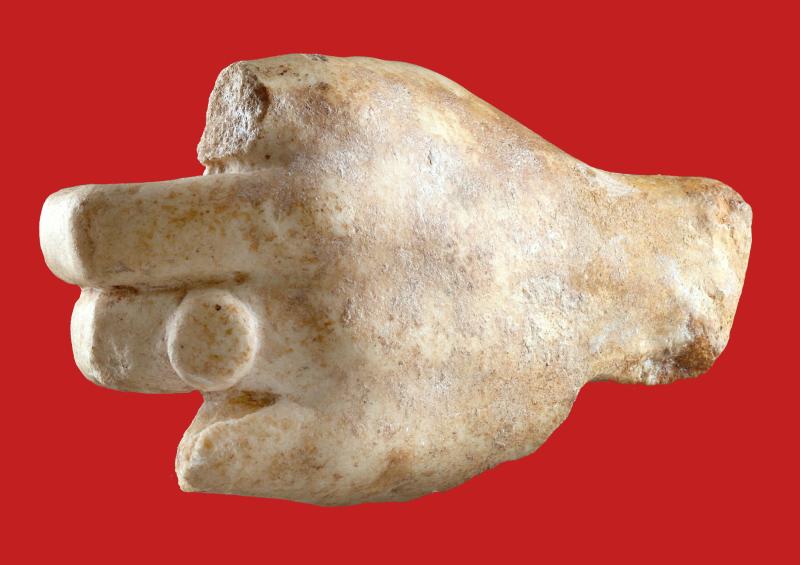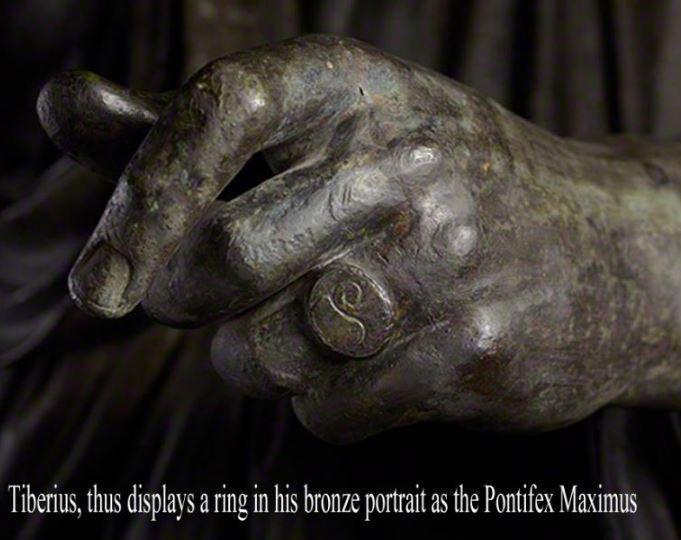Original Roman Empire period, Copper Alloy, 2nd Century Signet Ring with Engraved Bird
Henig type Xb ring. Wide oval bezel affixed to flattened shoulders engraved copper bronze alloy with gilt highlights. Almost identical to one found in the UK near Hadrian's Wall. That one was engraved to represent the Zaroastrian fire altar, or vessel of sprouting grains. The ring was important for displaying the Roman's status. For example Tiberius, who was after all left-handed according to Suetonius, thus displays a ring in his bronze portrait as the Pontifex Maximus:
So the rings were very important to tell from a glimpse of eye if a traveller was a citizen, an equites or a senator, or legionary. People sealed and signed letters with the rings and its falsification could bring death.
In ancient Rome they were used as signet rings, for the elite citizens and political leaders with power and wealth using them to sign documents by transferring their impression into a hot dripping of wax. At that point in history, there was no such thing as a written signature.
The fugitive slaves didn’t have rings but iron collars with texts like “If found, return me to X” which also helped to recognise them. The domesticus slaves (the ones that lived in houses) didn’t wore the collar but sometimes were marked. A ring discovered 50 years ago is now believed to possibly be the ring of Pontius Pilate himself, and it was the same copper-bronze form ring as is this one.
Code: 24854

